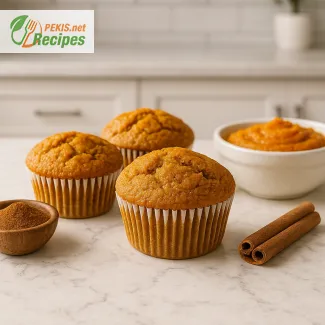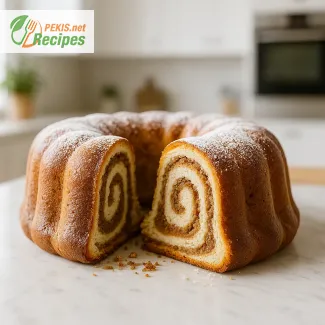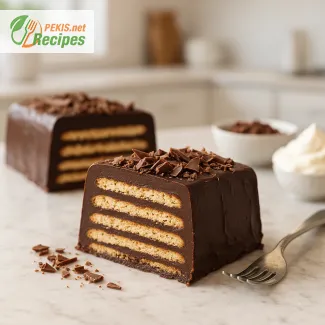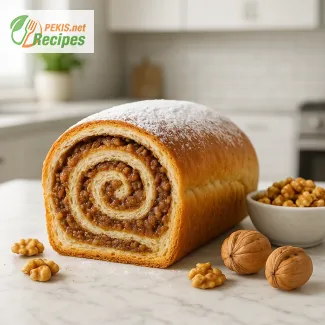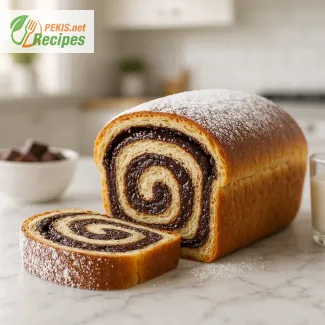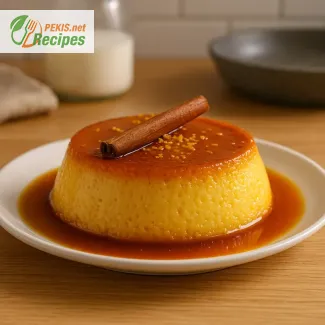
Discover the Rich Sweetness of Mexico’s Culinary Heritage
A sensory journey into the world of traditional Mexican desserts
Among the world’s most vibrant and soul-satisfying cuisines, Mexican food stands out not only for its bold, savory dishes but also for its rich and diverse dessert traditions. From silky custards to cinnamon-dusted pastries and milk-soaked cakes, traditional Mexican desserts offer a delightful symphony of textures and flavors that reflect the country’s cultural fusion of indigenous roots and colonial influence.
This recipe embodies that perfect balance — combining authentic flavors, time-honored methods, and ingredients that have stood the test of generations. Whether you're preparing it for a family celebration, a dinner party, or simply craving something decadently sweet, this dish transports your taste buds to the heart of Mexico with every bite.
The essence of a classic Mexican dessert
What makes a traditional Mexican dessert truly special lies in the harmony of its key elements: warm spices, caramel tones, creamy textures, and often a hint of citrus or vanilla. The iconic combination of cinnamon, evaporated milk, sweetened condensed milk, and fresh eggs brings out a custard-like richness that melts on the tongue and lingers in memory. These desserts often include a touch of orange zest, Mexican vanilla, or a drizzle of piloncillo syrup to elevate both aroma and depth.
Mexico's climate and terrain have nurtured an abundance of ingredients like cacao, cinnamon, and cane sugar, which found their way into everyday sweets during the colonial period and remain central to dessert-making today. The creamy texture achieved through slow baking and cooling is an essential characteristic, offering a melt-in-the-mouth experience that makes every spoonful a celebration.
Why authentic Mexican flavors matter
In the age of fusion and reinterpretation, staying true to the original flavor profile can be a revelation. This dessert remains faithful to the traditional taste with carefully chosen ingredients that preserve the signature warmth, silkiness, and gentle spice of the classic. Authenticity doesn’t mean complexity — this recipe invites both novice and seasoned bakers to explore traditional methods in a way that’s accessible and rewarding.
Moreover, using authentic ingredients like cinnamon sticks instead of powder, or whole vanilla beans, enhances not just the depth of flavor but the cultural integrity of the dish. These subtle choices distinguish a memorable dessert from a forgettable imitation. The result is something deeply comforting, yet undeniably luxurious.
A celebration of family, tradition, and joy
Mexican desserts are more than just sweet endings; they are cultural rituals, often shared at celebrations like Día de los Muertos, Christmas, Easter, and family gatherings. Each variation of a flan, cake, or pudding carries stories, memories, and the essence of shared moments. Recreating this dessert at home is not only an act of culinary appreciation, but also a way to honor tradition while creating new memories around the table.
Whether you're familiar with the allure of tres leches, the burnt sugar depth of flan, or the comforting crunch of churros, this recipe builds on those experiences with a refined twist that captures the soul of Mexican dessert-making. The method preserves tradition while embracing ingredients that are easy to source, making it a modern homage to a time-tested classic.
What to expect from this dessert
This is not your typical store-bought sweet. The end result is a luxuriously smooth, lightly caramelized, and gently spiced dessert that holds its shape but dissolves instantly in your mouth. It’s elegant enough to serve at formal occasions yet simple enough for a cozy night in. Best served chilled, it’s a dish that only improves over time as flavors meld and intensify.
Perfectly balancing sweetness, spice, and creamy richness, it delivers everything one seeks in a comfort dessert, while introducing the vibrant heart of Mexican culinary culture into your kitchen. If you’ve ever wanted to recreate a dish that whispers tradition with every spoonful, this is your opportunity.
Ready to immerse yourself in one of the most beloved sweets of Latin America? This recipe is about to become your new go-to favorite — a Mexican dessert that’s more than food; it’s a story told in flavor.
- Prepare the caramel:
In a heavy-bottomed saucepan, add the granulated sugar and water. Heat over medium-low, stirring gently until sugar dissolves. Stop stirring and let it simmer until it turns into a golden amber caramel. Immediately pour the hot caramel into the base of a round 20 cm (8 inch) baking dish or flan mold, tilting to coat the bottom evenly. Let it cool and harden. - Heat the milk mixture:
In another saucepan, combine whole milk, cinnamon stick, and orange zest. Heat gently over medium heat until it begins to steam, then remove from heat and let steep for 10 minutes. Discard the cinnamon stick and zest. - Mix the custard base:
In a large mixing bowl, whisk the eggs until smooth. Slowly add sweetened condensed milk, evaporated milk, infused whole milk, and vanilla extract. Mix until well combined, without overbeating to avoid bubbles. - Strain the mixture:
For a silky texture, strain the mixture through a fine sieve into a jug or bowl to remove any egg solids. - Assemble for baking:
Pour the custard mixture over the hardened caramel in the prepared mold. Place the mold inside a larger baking tray. Create a water bath by filling the tray with hot water until it reaches halfway up the sides of the flan mold. - Bake:
Carefully transfer the tray to a preheated oven at 160°C (325°F) and bake for approximately 60 minutes, or until the center is just set but slightly wobbly. - Cool and chill:
Remove the mold from the water bath and allow it to cool to room temperature. Cover with foil and refrigerate for at least 4 hours or overnight. - Unmold and serve:
To release the flan, gently run a knife around the edges of the mold. Place a plate over the top and quickly invert. Let the caramel sauce drizzle over the dessert. Slice and serve chilled.
Creative Ways to Elevate the Flavor and Texture of Mexican Custard Desserts
Expert insights and ingredient swaps to perfect your homemade flan
Perfecting a traditional Mexican dessert like flan or caramel custard isn’t just about following a recipe — it’s about understanding how each ingredient contributes to the final result and how subtle modifications can take a classic from good to exceptional. While the base recipe is timeless, exploring variations, improvements, and healthier adaptations opens a world of possibility for home bakers. Below, you'll discover professional techniques, common mistakes to avoid, and ingredient innovations that enhance texture, flavor, and overall quality — all without compromising authenticity.
Adjusting sweetness without losing flavor
One of the most defining characteristics of a Mexican custard dessert is its rich, sweet flavor. However, balancing sweetness is crucial for modern palates. Instead of reducing sugar abruptly, consider replacing part of the sweetened condensed milk with evaporated milk and adding a natural sweetener such as maple syrup, honey, or agave nectar in small amounts. These alternatives contribute not just sweetness, but also complexity and depth.
If you wish to reduce refined sugar, use coconut sugar or date syrup, both of which offer a caramel-like undertone while keeping the flavor profile aligned with traditional roots. Keep in mind that different sweeteners may affect the texture and setting of the custard, so adjustments to baking time may be necessary.
Enhancing texture with dairy alternatives
The classic flan is made with whole milk, evaporated milk, and condensed milk. For a lighter version, consider using half-and-half, low-fat milk, or a mixture of almond milk and coconut milk. The latter adds a hint of nuttiness and richness that works beautifully in desserts. For creamier results, adding a tablespoon of heavy cream can elevate the silkiness without making it too rich.
To keep the smooth texture, always strain the custard mixture before baking. This step removes any coagulated egg bits and ensures an even, velvety finish.
How flavor boosters can transform the base
Adding aromatic ingredients can greatly impact the final profile. Infusing the milk with a vanilla bean, star anise, or clove before mixing it into the custard gives the dessert subtle warmth and sophistication. Fresh citrus zest, such as orange or lime, adds brightness and balances the richness of the caramel. These additions do not require major changes to the recipe but make a noticeable difference in the flavor complexity.
For chocolate lovers, incorporating dark cocoa powder or melted Mexican chocolate can turn the flan into a mocha-style treat. A pinch of chili powder or cayenne also gives an unexpected but delightful kick, reminiscent of traditional Mexican hot chocolate.
Homemade vs. store-bought: Why making it yourself wins
While store-bought flans are convenient, homemade desserts offer superior texture, customizable flavor, and freshness. When made at home, you can adjust ingredients based on dietary needs, avoid preservatives, and experiment with organic or local produce. Most importantly, the caramelized sugar layer, which is prone to artificial coloring in store-bought versions, becomes more aromatic and nuanced when prepared from scratch.
The process of baking it in a water bath at home also allows for better control over the cooking consistency, avoiding rubbery or overcooked results — a common issue in mass-produced desserts.
Common mistakes and how to avoid them
- Overbeating the eggs: This introduces too much air, resulting in a spongy texture. Always whisk eggs gently and avoid using electric beaters.
- Skipping the water bath: Baking without a bain-marie often causes the flan to curdle. The gentle heat of the water bath ensures a smooth custard.
- Burning the caramel: Caramel turns bitter quickly if left unattended. Keep a close eye and remove it from heat the moment it reaches a golden amber color.
- Unmolding too soon: Letting the dessert chill completely — ideally overnight — helps it firm up, ensuring a clean release from the mold.
Healthier alternatives that retain indulgence
For those seeking lower-calorie or dairy-free options, replace dairy products with a combination of unsweetened almond milk, cashew cream, or full-fat coconut milk. For eggs, try using silken tofu, cornstarch custard bases, or aquafaba (chickpea brine), especially in vegan versions.
You can also reduce the glycemic impact by incorporating chia seeds or a whole-grain cookie crust base (if you're transforming the flan into tart form), adding fiber and texture. Using natural sweeteners like stevia or erythritol in moderation can help reduce total sugar content without sacrificing taste.
Presentation and serving upgrades
While the traditional way to serve Mexican flan is inverted on a plate with caramel sauce, consider modern twists:
- Garnish with candied orange peel or edible flowers
- Serve in individual ramekins for elegant plating
- Pair with fresh berries, crushed pecans, or a dusting of cinnamon
- Drizzle with Mexican coffee reduction for a gourmet experience
Using minimalist plates and natural backdrops also enhances the visual appeal, especially when entertaining guests.
Making tradition your own
The beauty of traditional desserts lies in their flexibility. Once you understand the science behind the custard, the potential for adaptation is endless. Whether you're enhancing flavor with spice infusions, lightening the texture with alternative milks, or making the recipe accessible for special diets, you’re not just improving a dish — you’re extending its reach.
In today’s kitchens, honoring tradition doesn’t mean resisting innovation. Instead, it's about reinterpreting classic desserts with thoughtfulness and respect, creating versions that are healthier, more flavorful, and entirely your own — while preserving the soul of the original recipe.
Allergens present:
- Eggs
- Milk (dairy)
Contains gluten: No
Substitution tips to eliminate allergens:
- Replace cow’s milk with almond milk or oat milk (unsweetened) and use dairy-free condensed milk and evaporated milk alternatives.
- Replace eggs with a vegan custard mix or a combination of cornstarch (30 g / ¼ cup) and plant-based milk for thickening.
- Vitamin A: 220 µg – supports vision and immune function
- Vitamin D: 1.5 µg – helps maintain bone health
- Calcium: 250 mg – crucial for bone and teeth structure
- Iron: 0.8 mg – supports oxygen transport
- Potassium: 180 mg – helps regulate blood pressure
- Phosphorus: 170 mg – essential for energy metabolism
- Beta-carotene: 75 µg – supports skin health and immune function
- Lutein & Zeaxanthin: 120 µg – protect eye health
- Flavonoids (from cinnamon): approx. 15 mg – reduce inflammation and improve circulation
- Vitamin C: trace (from orange zest) – supports immunity and skin repair

